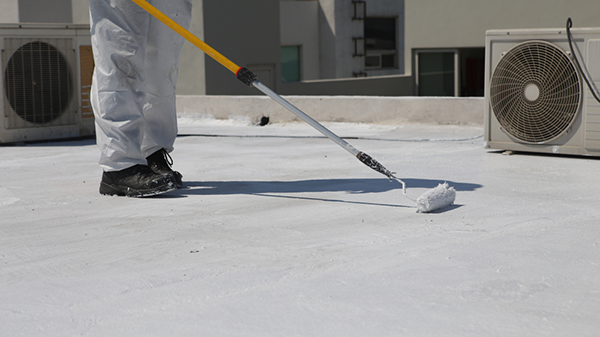The Growing Reflective Roof Coating Market
It's no surprise that the elastomeric, reflective roof coating remains the fastest growing product in the fluid-applied roofing market.

A reflective roof coating can meet strict cool roof performance requirements in building codes as well as lower energy consumption, which is a key goal of state and federal regulators.
While it's true that the high solar reflectivity and emittance of white elastomeric coatings can cut down on air conditioning costs, these products do a lot more than just save energy.
Prolonging The Life Of Existing Roof Systems
Elastomeric reflective roof coatings can restore, protect and beautify most waterproofing systems and prolong the life of almost any low-slope roof, including metal.
Even contractors who have shied away from selling restorative roof coatings are seeing the opportunities and have begun installing these products themselves rather than subbing them out to coatings specialists.
The benefits of today's cool roofing coatings are great, and reflectivity is often just the beginning of even more dramatic waterproofing performance.
Categorizing Roof Coatings
The reflective roof coatings market is primarily made up of white elastomeric products and, to a lesser degree, colored coatings that contain infrared reflective pigments.
Solvent-based elastomeric coatings, polyurethanes and polyureas all serve similar functions, but there are distinct differences between these products in terms of application, performance and price.
For the roofing contractor, material cost and warranty are the key selling points when considering a reflective roof coating.
High "Solids" Content
With one acrylic elastomeric coating selling for $75 a pail and another at twice that price, the difference usually comes down to the percentage of "solids" in the material.
Roof coating manufacturers generally agree that a product with 66-72 percent solids is a good choice for low-slope roofing. In fact, coatings with a high solids content of 70 percent or more can often be warranted for up to 20 years.
Of course, longer warranties require certified installers who can count on strong technical support and inspections from the roof coating manufacturer.
Dirt Resistance
A well-designed coating, regardless of color, should also be resistant to dirt pickup and reasonably receptive to cleaning when fully cured.
However, the very properties that allow the coating to remain pliable through cyclic temperature and climatic changes can undermine dirt resistance, particularly with lighter colors and in low-slope applications.
Dirt pick-up is an issue with any white roof surface and is best remedied by initiating a semi-annual maintenance program that includes thorough cleaning, inspection and repairs.
Strong Demand For Reflective Coatings
As legislators, architects and property owners embrace the idea that building design has a large impact on energy consumption and sustainability, they are also recognizing that a reflective roof coating offers big benefits with few drawbacks.
In addition, some building codes are now requiring the installation of reflective roofs.
With regard to retrofit applications, the cost-effectiveness, proven performance, ease of application and sustainability of roof coatings are other important factors driving demand.
For example, when applied to metal roofing, coatings can perform several important functions, ranging from aesthetics to weatherproofing. Coatings offer a choice of color, protection against moisture intrusion, potential energy savings and structural enhancement, all at a reasonable cost.
Benefits In Northern Climates
Reflective roof coatings can prevent high roof temperatures due to sun exposure and extend the life expectancy of many commercial roofing systems.
The technical term for this exposure is called "insolation." Heavily insulated roof systems used in northern climates block this type of radiation from penetrating the building as heat; however, in summer months, convective heat transfer to the surrounding air above the roof membrane can increase dramatically.
With nowhere to go, this heat can significantly increase membrane surface temperatures and long-term roof degradation.
Besides lowering roof surface temperatures, reflective coatings can also prevent premature roof surface deterioration by providing a "sacrificial" layer to take the punishment that the elements and the environment dole out.
Exponential Growth
The use of roof coatings is growing exponentially, particularly in the restoration market. More building owners are deciding to have their roofs coated, even when they are still sound, because they want to extend the lives of their existing roof systems.
As a result, more commercial roofing contractors are discovering the performance benefits of today's advanced reflective roof coatings.